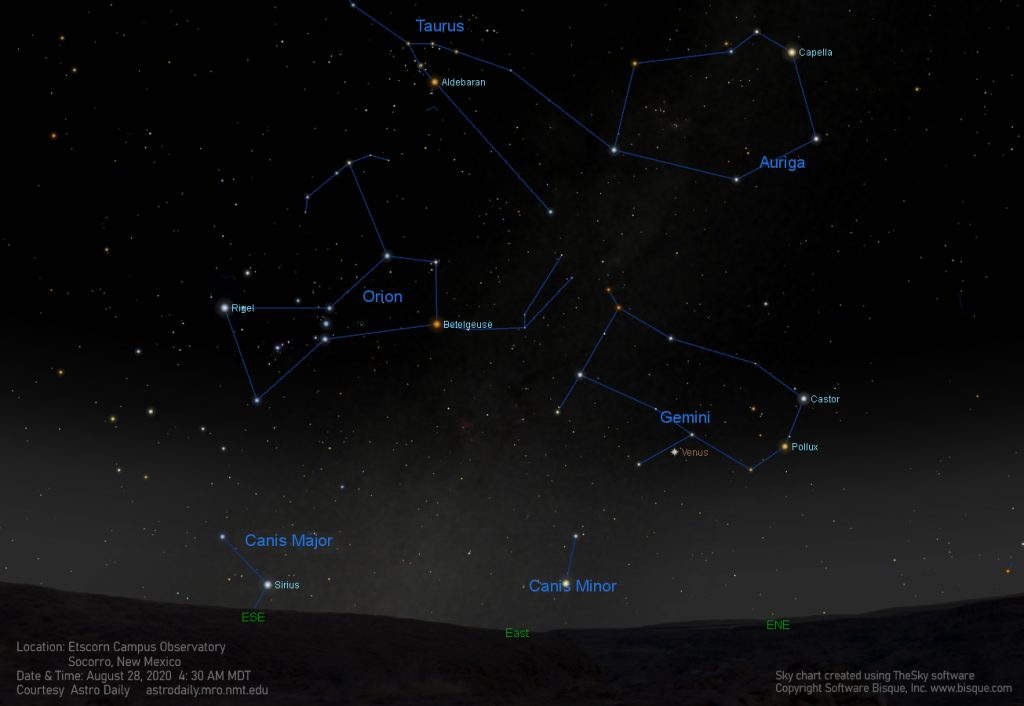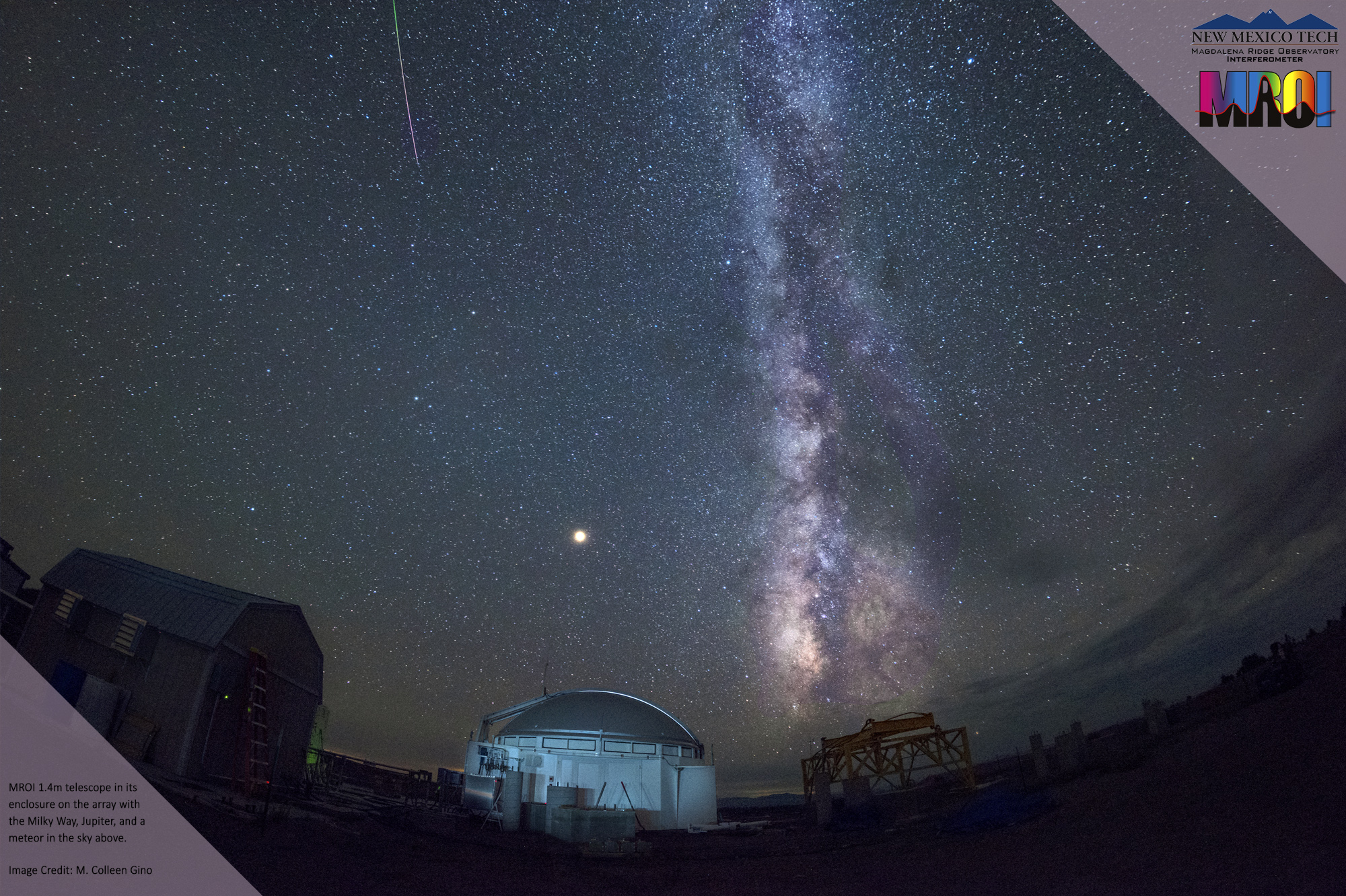If you’re awake in the hours before sunrise you’re in for a treat. Sirius, the brightest star in the night sky, is currently making its appearance in the early AM, rising a few hours before the Sun. Sirius first became visible in the east less than an hour before dawn a few weeks ago, its helical rising. Since stars rise about 4 minutes later every day, it will be visible longer and longer before sunrise. By the end of November, it will rise about 9 PM in the evening.
The Dog Star, as it is called, is in the constellation Canis Majoris, the big dog. The term “dog days of summer” comes from the fact that for those of us in the northern hemisphere Sirius in in the same portion of the sky as the Sun in July and August. The ancient Romans thought that since the Dog Star is so bright it must be hot, and that its heat added to that of the Sun’s made the 20 days before and 20 days after its alignment with the Sun all the hotter.
Sirius is a binary star; Sirius A, the brightest of the pair, is a hot main sequence star, undergoing thermonuclear fusion in its core. Sirius B is a white dwarf, a stellar corpse. Known as the Pup, Sirius B was also a bright bluish star once more massive than Sirius, but it exhausted its resources and ceased fusing hydrogen to helium some 120 million years ago.
Sirius is about 25 times more luminous than our Sun and nearly twice as massive. If our Sun was replaced by the Dog Star, we wouldn’t be having this conversation. The dog days of summer would be a freezing respite compared to the temps the Earth would be exposed to. Luckily, Sirius is just a fairly close neighbor at 8.6 light years away.

The star chart above shows where you can see Sirius in the wee hours of the morning. If you’re not an early bird don’t despair; just wait a few months and you will be able to observe this glimmering orb in the evening.
M. Colleen Gino, MRO Assistant Director of Outreach and Communications
